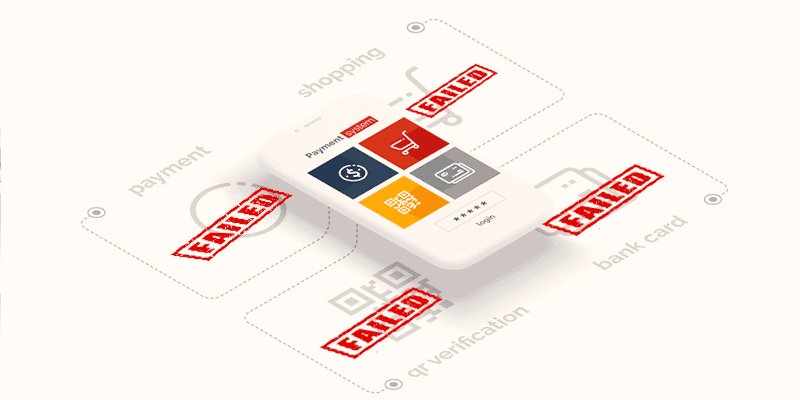Since the Central Bank of Nigeria’s policy to drastically reduce the flow of cash in the country went into effect, customers have been experiencing glitches and malfunctions with their bank apps.
Now, experts familiar with how the IT department of many Nigerian banks work have informed Technext that bank apps will continue malfunctioning indefinitely.
Companies like Zenith Bank, whose customers have been suffering from the malfunction and delay in online transactions, have had to send messages to allay their fears, saying they are working on the issue.
The CBN redesigned the naira notes to promote online transactions and rolled out new cash policies late last year. The maximum withdrawal per day via ATMs shall be 20,000 Naira, among other new guidelines.
But it ran into trouble when many commercial banks refused to disburse the new notes to their customers, leading to the arrest of multiple bank managers and top officials at banks involved in hoarding the new naira notes.
The decline of new notes in the country has caused many bank apps to glitch, resulting in delays with online transactions.
In an interview with a veteran IT specialist who has worked with multiple Nigerian commercial banks over the last decade, he said that the malfunction with many of the apps and other forms of online transactions is going to continue indefinitely because many of the banks have not done their due diligence before now.
Another IT specialist who has worked with several fintech startups in Nigeria and abroad agrees with the assessment, stating that many of these bank apps were not built to scale. “Most of the technologies of these bank apps are bought or built by contractors. So usually, when they are deployed, there is nobody to tweak or optimise until there’s a problem. At this point, they need to award contracts again and other wait for other approval processes.”

For how long will the glitch continue?
On why the massive online transaction delays and glitches have been happening in bank apps, the bank IT specialist said that the traffic from the influx of online transactions in the past few weeks had overwhelmed the system. “They are not used to the kind of traffic they are getting now. The high rise of queues and requests is choking them. No proper redundancy was put in place,” he said.
But this is something that the banks could have fixed during a routine maintenance check months ago. Some other bank apps with fewer glitches that had made provisions for this type of scalability have been able to navigate this moment much better.
He said this is because “they are running a software-defined infrastructure and a Netscaler load balancer to ensure requests are attended to in real-time. So it’s easy to scale up when needed.”
By software infrastructure, he means that those banks run a cloud-based infrastructure primarily, which can expand to absorb more transaction requests easily.
But the crash hasn’t affected fintech apps as much. He said this is because they have fewer customers compared to the big banks that have been affected. “They don’t have as much customer base like those that are crashing,” he said.
The Fintech IT expert that spoke to Technext agrees to some extent that software infrastructures may be part of the problems these bank apps face. However, he said that many fintech companies “monitor, anticipate and improve” their systems to accommodate customer demands.
“Whether you use cloud or on-premise, if the app is not built to scale, you’d have issues when transactions increase. Yes, the cash issue has more customers conducting more transactions, but we have always heard of transfer issues with the bank apps. So, why have they not beefed up their systems before now?”
The problem many of the banks affected by the influx of online transactions are experiencing, and why it has gone on for so long, is that the system demands more infrastructure to expand and operate freely. This is not something that they fix in a couple of hours or days.
According to the bank IT specialist, these companies will need to scale up manually because they are running an on-premise server model, which means they are maintaining their infrastructure themselves, hosted on local data centres like MainOne and Rack Center.
The IT specialist gives an analogy on why the problems will continue for a while.
“Imagine you own a car. Normally you carry five people. Then suddenly ten people want to ride with you. You have to start looking for another car. It’s not just easy to go buy another car instantly and transport the extra guys. But if you are on a BRT, you can just pay extra for the extra guys. If they increase to 20, 50, or even 100, there are more BRTs waiting to transport them. All you need to do is pay more as needed. That’s cloud services for you. There is no way you are running a cloud service, and your apps are failing. It scales up as demanded.”

How can it be solved?
For the banks to begin scaling their infrastructure, the demands will need to have subsided drastically.
“It might have to go on like this till the demand comes down,” he said. “Then they can work on their infrastructure. It’s a whole lot of work. A technology refresh,”: he added. But with cash largely unavailable, it doesn’t look like that will happen anytime soon. These companies, he said, need time and space to also breathe.
“Those that haven’t, need time, good leadership, and a technically sound team to accomplish this,” he said. “It’s not just something you wake up and embark on. It can lead to serious downtime because there will be a lot of failovers and tests and simulations. You will also need third-party supervision, from entities that have guided other banks during their process, to support your internal teams,” he added.
What can you do?
In the meantime, he advises that customers looking for seamless transactions during this time will need to find a bank with an app that is currently working without delays or glitches.
“You just have to find the banks that have done their homework and hop on,” he said.

